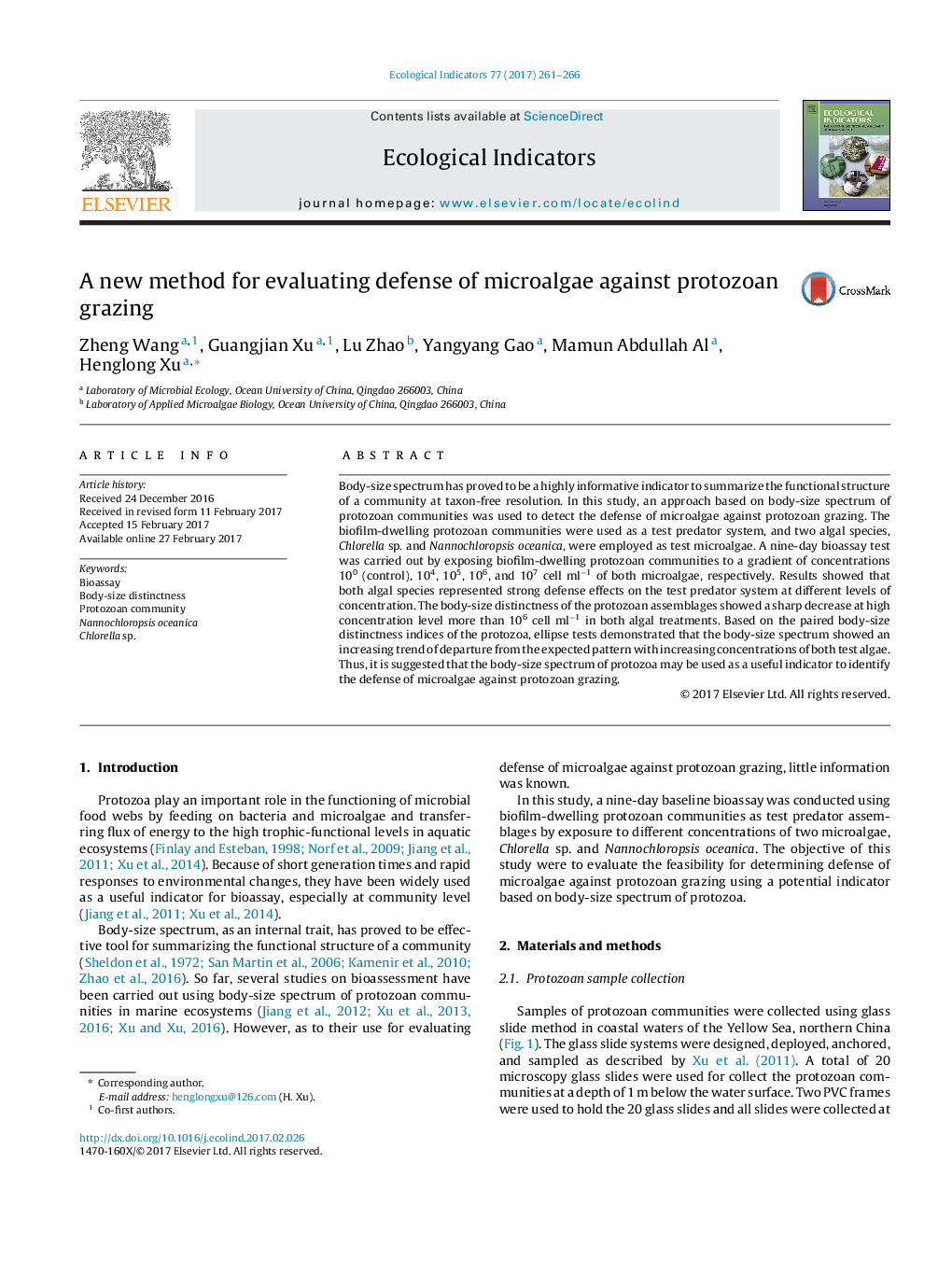| Article ID | Journal | Published Year | Pages | File Type |
|---|---|---|---|---|
| 5741729 | Ecological Indicators | 2017 | 6 Pages |
Abstract
Body-size spectrum has proved to be a highly informative indicator to summarize the functional structure of a community at taxon-free resolution. In this study, an approach based on body-size spectrum of protozoan communities was used to detect the defense of microalgae against protozoan grazing. The biofilm-dwelling protozoan communities were used as a test predator system, and two algal species, Chlorella sp. and Nannochloropsis oceanica, were employed as test microalgae. A nine-day bioassay test was carried out by exposing biofilm-dwelling protozoan communities to a gradient of concentrations 100 (control), 104, 105, 106, and 107 cell mlâ1 of both microalgae, respectively. Results showed that both algal species represented strong defense effects on the test predator system at different levels of concentration. The body-size distinctness of the protozoan assemblages showed a sharp decrease at high concentration level more than 106 cell mlâ1 in both algal treatments. Based on the paired body-size distinctness indices of the protozoa, ellipse tests demonstrated that the body-size spectrum showed an increasing trend of departure from the expected pattern with increasing concentrations of both test algae. Thus, it is suggested that the body-size spectrum of protozoa may be used as a useful indicator to identify the defense of microalgae against protozoan grazing.
Related Topics
Life Sciences
Agricultural and Biological Sciences
Ecology, Evolution, Behavior and Systematics
Authors
Zheng Wang, Guangjian Xu, Lu Zhao, Yangyang Gao, Mamun Abdullah Al, Henglong Xu,
